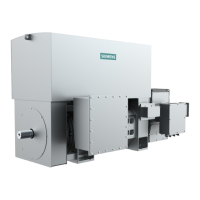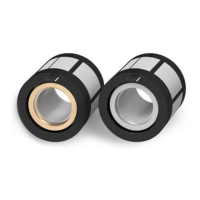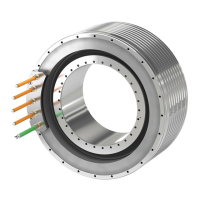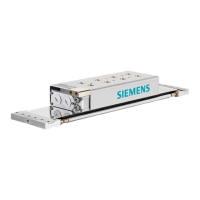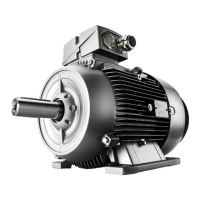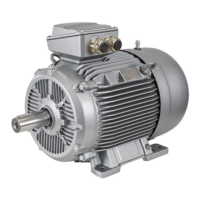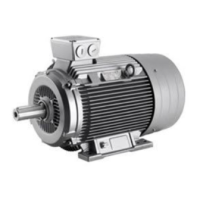Table 4-30 Requirements placed on the balancing process as a function of the motor balancing type
Balancing equipment/
Process step
Motor
Half key balanced
Motor balanced with full key Motor with plain
shaft end
Auxiliary shaft to balance
the mounted component
• Auxiliary shaft with key‐
way
• Keyway with the same di‐
mensions as in the motor
shaft end
• Auxiliary shaft half key
balanced
• Auxiliary shaft with key‐
way
• Slot design with the ex‐
ception of the slot width
(as the motor) can be free‐
ly selected
• Auxiliary shaft full key bal‐
anced
• Auxiliary shaft without
keyway
• If required, use a tapered
auxiliary shaft
• Balance quality of the auxiliary shaft ≤ 10 % of the required balance quality of the compo‐
nent to be mounted to the motor
Attaching the mounted com‐
ponent
to the auxiliary shaft for bal‐
ancing
• Attached using a key
• Key design, dimensions
and materials the same as
at the motor shaft end
• Attached using a key
• Key design, dimensions
and material the same as
used for the full key bal‐
ancing of the auxiliary
shaft
• Attach the component as
far as possible without
any play,
e.g. using a light press t
on the tapered shaft
Position the mounted compo‐
nent on the auxiliary shaft
• Select a position between
the mounted component
and the key of the auxili‐
ary shaft so that it is the
same when mounted on
the actual motor
• No special requirements
Balance the mounted compo‐
nent
• Two-plane balancing is recommended - i.e. balancing in two planes at both sides of the
mounted components at right angles to the axis of rotation
Special requirements
If special requirements are placed on the smooth running operation of the machine, we
recommend that the motor together with the output components is completely balanced. In this
case, balancing should be carried out in two planes of the output component.
4.9.2 Balancing 1PH8 motors with "Premium Performance" bearing version
The on-site mechanical system vibration characteristics depend on factors such as the output
elements, mounting situation, alignment, installation, and external vibration and can increase
the level of motor vibration. Under certain circumstances, the rotor may have to be balanced
completely with the output element.
1PH8 motors are supplied with "special" vibration severity. Mounting a coupling element on
the shaft extension changes the rotor balancing state. As a consequence, after mounting
coupling elements, the rotor must be completely balanced. The following description shows,
using an example, the procedure for 1PH8 motors with "Premium Performance" bearing
version. You must determine the vibration severity and the position of the imbalance by
making the appropriate measurements. You can then remove the imbalance.
Mechanical properties
4.9Balancing
1PH8 SIMOTICS M main motors
Conguration Manual, 12/2022, A5E51895839A 141
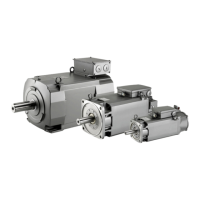
